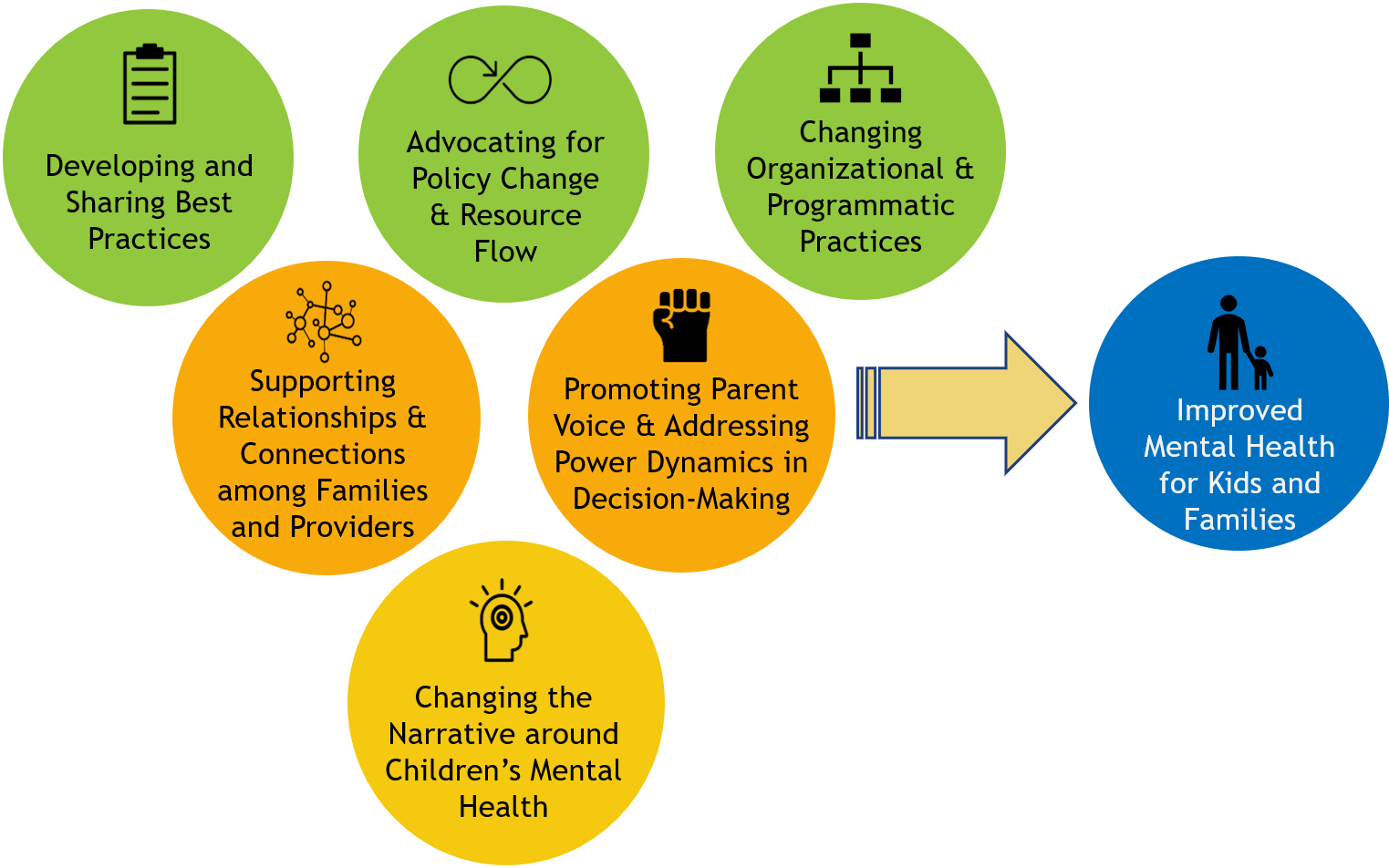“Systems change is about shifting the conditions that hold a problem in place.”
Systems change is helpful in solving complex problems such as providing positive mental health outcomes to children and creating stronger families, because it aims to address the root cause of problems instead of providing support after it already happens.

This image is adapted from The Water of Systems Change (Kania, Kramer, & Senge, 2018)
Systems change must happen through 6 different paths:
1. Practices: How activities in an organization or government are done, the informal rules that organizations follow;
2. Policies: The laws and rules that government and organizations have and follow
3. Resources: How resources are shared, can mean how money, knowledge, locations, and other assets are accessed
4. Relationships: Quality of relationships, especially between content and context experts
5. Decision makers/Power dynamics: Who makes the decisions and how that power is shared
6. Mental models: How we think -- deeply held beliefs and assumptions that influence how we think, what we do, and how we talk
While all of these, are important the coalition prioritizes the last 3 ways to approach systems change. If you would like to read more about how the coalition addresses these click here.
If you would like to learn more about systems change, the following have been influential to us:
- The Water of Systems Change
- Evaluating Systems Change Results: An Inquiry Framework
- Scale Deep: Using a Feminist Approach to Shift Systems
In addition, you can check out BeautifulTrouble.org to find tactics, principles, case studies, and more on how to "inspire movements for a more just, healthy, and equitable world." One such tactic is "Light Brigading" which was started and popularized in 2011 in Milwaukee by Overpass Light Brigade.






















